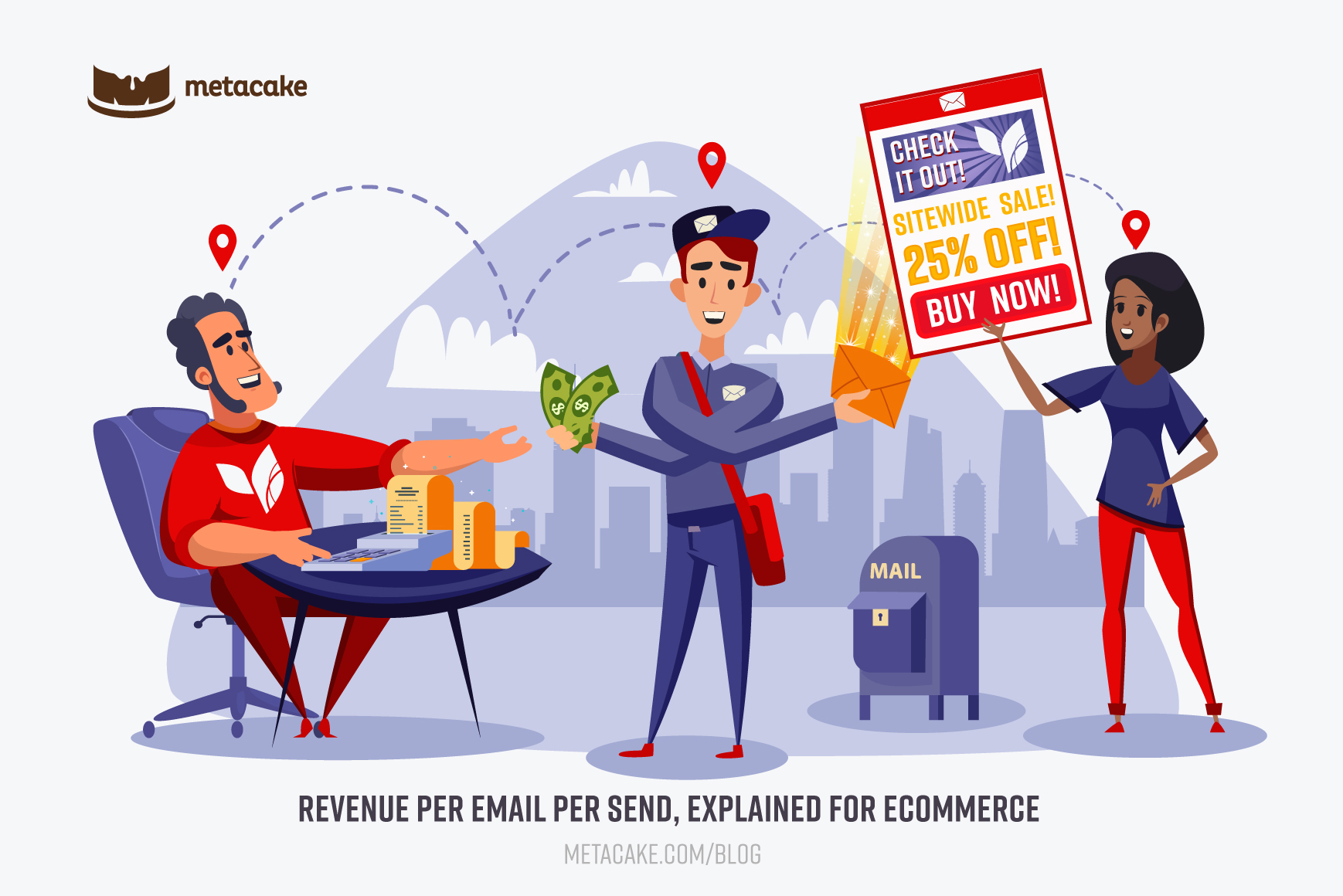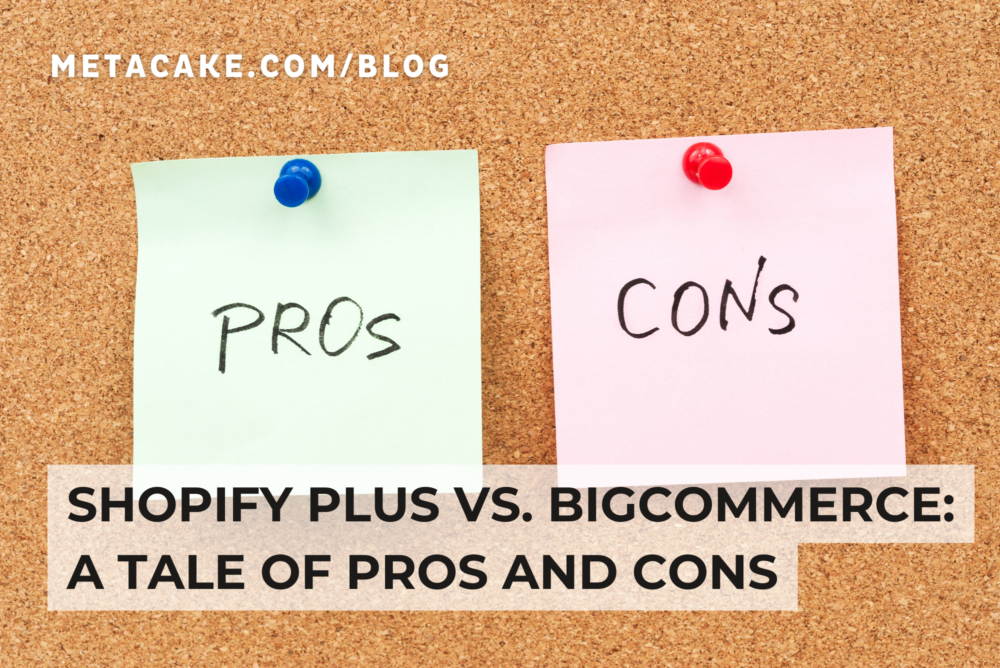
The Golden Metric for Ecommerce Email Success
Most ecommerce brands are not getting the most value possible out of their email program. They might send promotional emails during a sale and have a few automations set up, but the businesses that use email marketing to its full potential are few and far between.
Why is email marketing important for ecommerce brands?
Did you know that a healthy email program could (and should) be generating 30% or more of your company’s revenue if it’s run correctly? This number varies depending on the business size and the customer list. But those variables aside, a great email program is key to a successful business because of its ability to amplify customer lifetime value.
How can you improve your email marketing program?
We won’t get into how to create a revenue-driving email program in this post, but if you want to get serious about improving your email marketing, we encourage you to pick up a copy of our full email guide, The Ultimate Guide to Ecommerce Email Success. You can also check out our case study for how we used email marketing to grow a client from brand new to making 8-figures in just 3 years.
In this post, we will discuss how to properly judge the success of every email campaign you send using our RES (Revenue per Email Sent) metric, whether you’re sending a promotional email, an automated sequence, or a newsletter.
What is required to track the health of your email marketing?
Before you start assessing any email marketing data, you need to use an email platform that integrates seamlessly with your ecommerce store. This way, your email platform will have access to all customer activity and sales data and therefore give an accurate picture of the revenue each email generates.
If your current email platform does not integrate with your ecommerce site, we highly recommend making a switch to an email service provider designed for ecommerce, such as Klaviyo. Klaviyo is consistently our top choice for every brand we work with (find out why with 8 Reasons Klaviyo is a No-Brainer for Ecommerce Companies). We show you how to use a system like Klaviyo to produce results further in our Ultimate Guide to Ecommerce Email Domination as well.
How to Assess Email Marketing Performance Using RES (Revenue per Email Sent)
When assessing email performance, there are really two ways you can look at it: email program health, or email campaign success.
If you’re wondering about the health of your email program, we typically look at metrics such as open rate, click rate, and unsubscribe rate. You’ll want to assess these at the account level and at the email type level, looking at the metrics for campaign emails and for automated emails.
These are crucial metrics. But when judging the success of a particular email program (or a specific email campaign), we look at the ratio of revenue per email sent.
What is the revenue per email sent ratio?
Calculating the revenue per email sent is simple. After sending an email campaign and giving customers 24-48 hours to act on it, look at the total revenue the email generated. Divide the revenue by the number of successful deliveries. For example, if an email generated $1,000 in revenue and it was sent to a list of 10,000 people, the revenue per email sent would be $0.10.
This number will be different for sales-focused emails vs. content-focused emails. Of course sales or promotion-based emails will have a higher revenue per send, but if you have a decent size list, both email types should drive revenue.
Why is revenue per email sent important?
While opens and clicks are good indicators of engagement, they won’t demonstrate whether the email program (or the campaign or the automation) are successful in terms of revenue. And even if you look at the total sales your emails generate, you won’t have a clear view of what’s going on. Making $2,000 off one email campaign sounds nice, but if that email was sent to 1000,000 names, it’s actually not so great. That is why we assess email marketing performance by looking at revenue relative to the number of emails sent.
What should your revenue per email sent be?
We use 10 cents per email per send as our healthy baseline. A solid email program’s campaigns should fall close to that. If you have a smaller list, you might be seeing more revenue per send, which is great. For larger lists, it may be lower. However, if you do have a large email list, it’s very important to segment your audience so that each email campaign gets sent to the most relevant audience possible.
How does your email marketing program measure up?
If you find that your revenue per email sent ratio frequently falls below the $0.10 benchmark, it’s time to assess the health of your email program. You may have an unengaged email audience and need to spend time segmenting your email list to win lapsed customers back. Or, your sales copy, design, or call-to-action may need testing to see what is most compelling for your audience. Maybe your email or your site is experiencing technical issues, either on the user-experience side or from a tracking standpoint. Do some investigation, pinpoint the problem, and begin the process of improving the email experience for your customer. We have a ton of resources on this that we will link at the end of this article.
If you find that your revenue per email sent is above the $0.10 benchmark, that is awesome! Your next step is to determine how to scale that without losing the strong RES. You might have a great, niche audience that responds well to email promotions but finding a way to scale is key to building your email program and your business.
Are you using the right email marketing platform?
Lastly, if you are unable to calculate this number, it’s time to find an email platform that is capable of pulling this data asap. When it comes to email, you can’t rely on Google Analytics alone for revenue data due to discrepancies in attribution. For example, if a customer receives an email, opens it but does not click a link, and then goes to your store to make a purchase, Google Analytics won’t know that purchase should be attributed to email. However, Klaviyo will. Additionally, if a customer receives an email on one device and completes their purchase on another, Klaviyo will be able to record that conversion but Google Analytics will not. Visibility into this kind of data is just one of many benefits you’ll find using an email service provider designed specifically for ecommerce.
Next Steps
If you want to find greater opportunity and more revenue in your ecommerce email program, we’re here to help! Check out the articles listed below, and pick up a copy of The Ultimate Guide to Ecommerce Email Domination. These resources will get you on the right track to establishing an email program that elevates customer lifetime value, builds relationships with your customers, increases revenue, and ultimately grows your brand.


